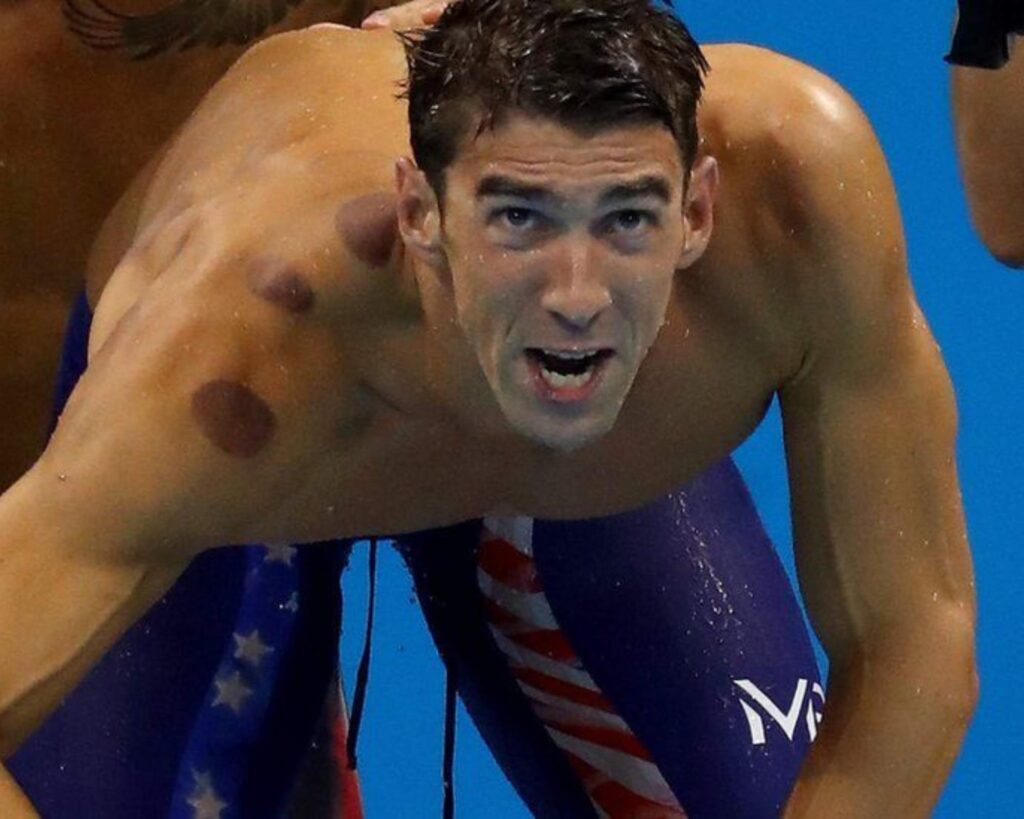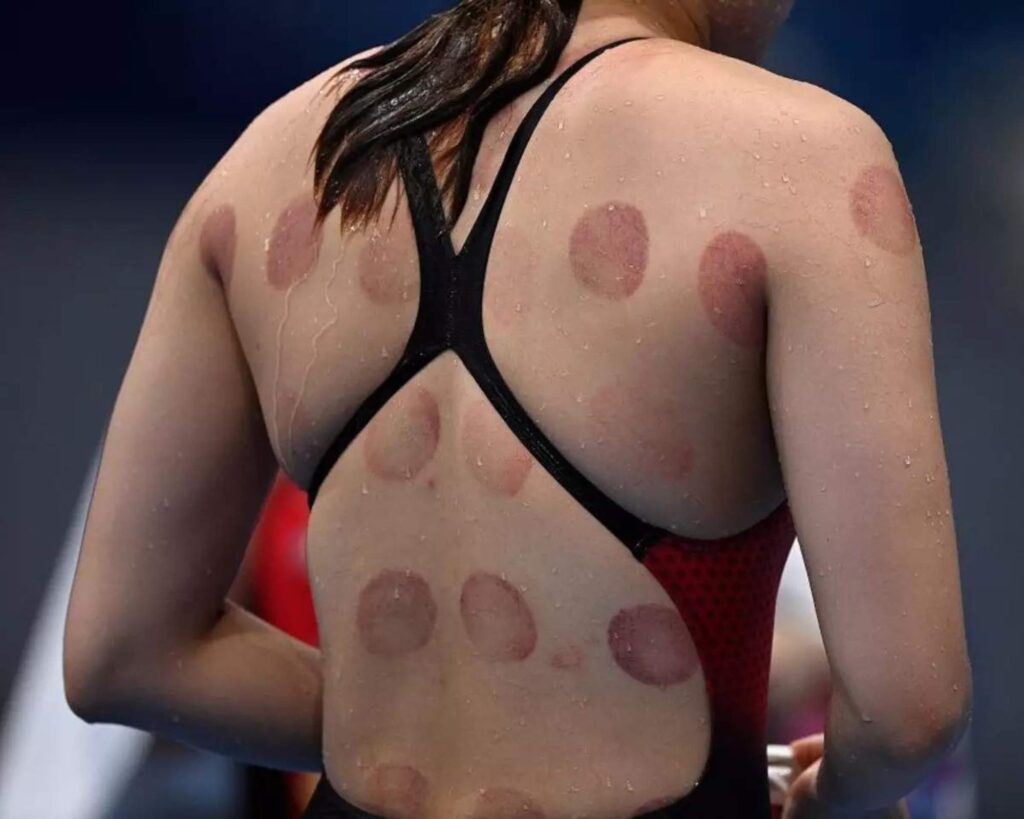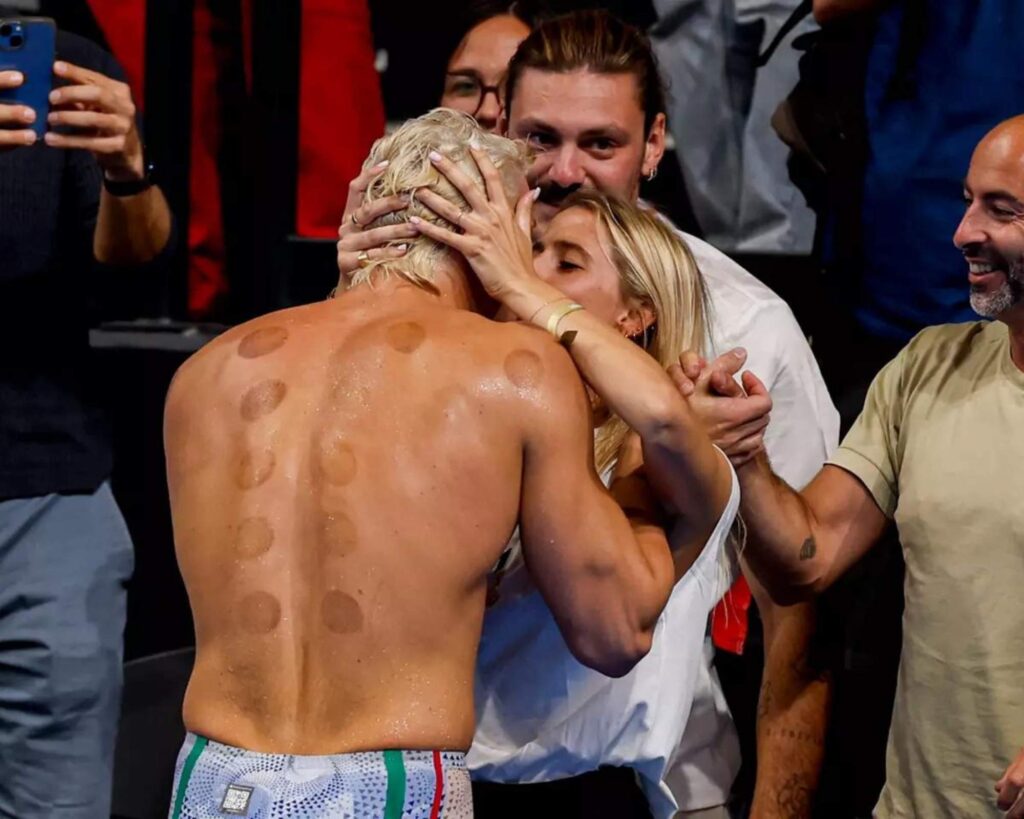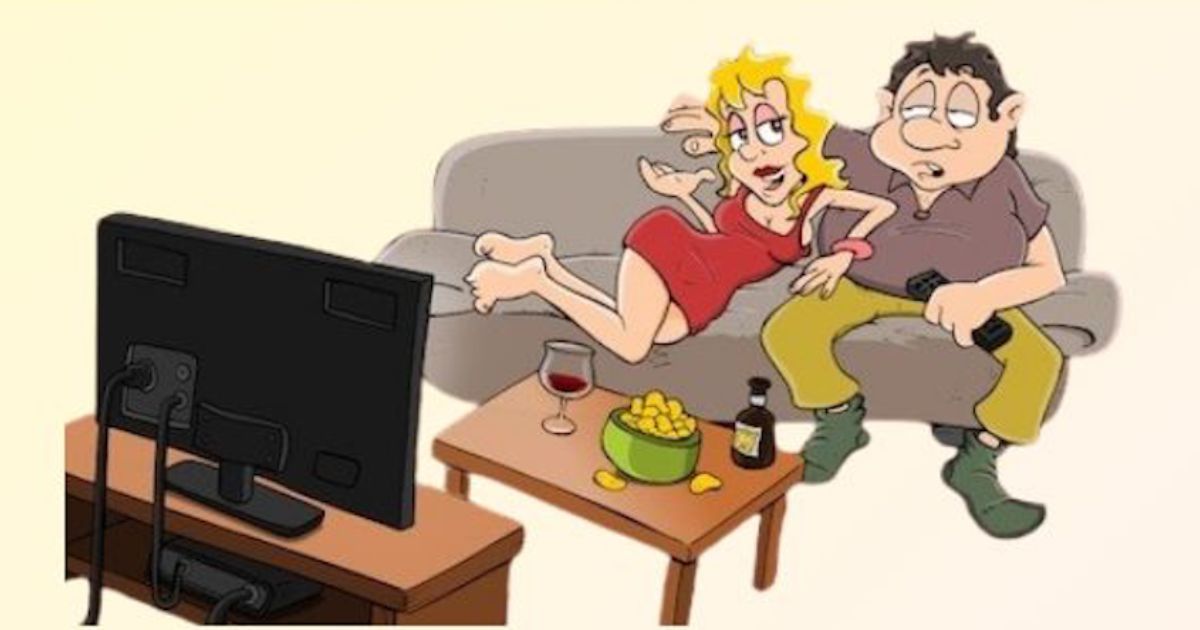The Olympics are in full swing this year, capturing everyone’s attention with a wide array of sports happening across Paris, France. From archery to gymnastics, the games have something for everyone. Among the most popular events is swimming, with 854 athletes from 187 countries diving into the competition.

If you’ve been watching closely, you might have noticed some swimmers with unusual dark red circles on their backs. These markings might look strange, almost as if they had a run-in with an octopus, but there’s actually a practical reason behind them.
The Mystery of the Red Circles
These spots are the result of cupping therapy, an ancient healing practice where cups are placed on the skin to create suction, improving blood flow and aiding muscle recovery. This technique acts like a deep tissue massage and has been embraced by many athletes over the years.
Cupping first gained widespread attention during the Rio Olympics in 2016, and it’s still popular among athletes today. Gymnast Alexander Naddour once referred to cupping as the “secret” to his physical health, noting that it was the best investment he had ever made.

Debating the Effectiveness of Cupping
Basketball player Kyle Singler also endorsed the benefits of cupping, acknowledging that while the bruises might look intense, the therapy’s long-term effects on muscle recovery are well worth it. He explained that the therapy helps with loosening tissue, even if the benefits aren’t always immediately obvious.
However, the effectiveness of cupping therapy is still debated among experts. Harvard Health reports that some studies suggest cupping may offer relief for musculoskeletal and sports-related conditions, but the evidence is considered limited. A 2022 review found that wet cupping might be effective for lower back pain, but more research is needed.

Despite the dramatic appearance of the bruises, cupping is generally regarded as safe. Harvard Health explains that side effects are usually minor, limited to the pinch felt during skin suction. Serious issues are rare, though there have been occasional reports of skin infections.
In summary, while the effectiveness of cupping therapy is still up for debate, many athletes continue to use it as part of their recovery regimen. And as long as those who try it don’t mind the temporary marks, it’s a practice that remains popular in the world of sports.




